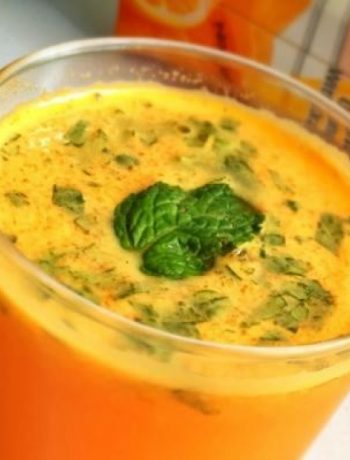
TipWhy Do We Celebrate Christmas on Dec. 25?
There are several reasons Christmas is celebrated on Dec. 25. The date is nine months after March 25, a day recognized by Christians as Annunciation. It was the day Mary was told she would was having a baby. The nine months that follow are an approximation of Jesus’ birth. Dec. 25 also coincides with pagan Winter Solstice celebrations like Saturnalia’ and Dies Natalis Solis Invicti. Since they were historically celebrated around that time of year there was precedent for holiday festivities during this time of year.
Read More
1 of 6
Next: What Does the Name ‘Christmas’ Mean and What Is the Meaning of Christmas?
TipWhat Does the Name ‘Christmas’ Mean and What Is the Meaning of Christmas?
Christmas is a shortened from the words “Christ’s mass.” It’s derived from the Middle English word “Cristemasse” which has Greek, Hebrew and Latin origins. Christmas is an annual holiday that honors the birth of Jesus Christ. It is celebrated by Christians around the world and is regarded as an important religious and cultural holiday.
Read More
2 of 6
Next: How Can We Celebrate Christmas?
TipHow Can We Celebrate Christmas?
Christmas is traditionally celebrated in many ways and celebrations vary across cultures. In the days leading up to Christmas, people usually put up special decorations including colorful lights and evergreen trees. Gifts are often placed under the tree and exchanged on Christmas day among loved ones. Large meals are also typically served as part of the celebration as well.
Read More
3 of 6
Next: How to Store Eggs
TipHow to Store Eggs
Eggs should keep a consistent and low temperature. This is best achieved by placing their carton in the center of your fridge. The eggs should also remain in their original packaging to avoid the absorption of strong odors. It is wise to follow the “best by” date to determine overall freshness, but eggs can be tested by simply dropping them into a bowl of water. Older eggs will float while fresh eggs will sink. This is due to the size of their air cells, which gradually increase over time. Cooked eggs have a refrigerator shelf life of no more than four days, while hard-boiled eggs, peeled or unpeeled, are safe to consume up to one week after they’re prepared.
Read More
4 of 6
Next: How to Cook Eggs
TipHow to Cook Eggs
The beauty of an egg is its versatility. Eggs can be cooked in a variety of ways. Here are some tips in accomplishing the four most common preparations. Scrambled: Whip your eggs in a bowl. The consistency of your scrambled eggs is a personal preference, though it seems like the majority of breakfast connoisseurs enjoy a more runny and fluffy option. In this case, add about ¼ cup of milk for every four eggs. This will help to thin the mix. Feel free to also season with salt and pepper (or stir in cream cheese for added decadence). Grease a skillet with butter over medium heat and pour in the egg mixture. As the eggs begin to cook, begin to pull and fold the eggs with a spatula until it forms curds. Do not stir constantly. Once the egg is cooked to your liking, remove from heat and serve. Hard-boiled: Fill a pot that covers your eggs by about two inches. Remove the eggs and bring the water to a boil. Once the water begins to boil, carefully drop in the eggs and leave them for 10-12 minutes. For easy peeling, give the eggs an immediate ice bath after the cooking time is completed. For soft-boiled eggs, follow the same process, but cut the cooking time in half. Poached: Add a dash of vinegar to a pan filled with steadily simmering water. Crack eggs individually into a dish or small cup. With a spatula, create a gentle whirlpool in the pan. Slowly add the egg, whites first, into the water and allow to cook for three minutes. Remove the egg with a slotted spoon and immediately transfer to kitchen paper to drain the water. Sunny Side Up/Over Easy/Medium/Hard: For each of these preparations, you are cracking an egg directly into a greased frying pan. For sunny side up, no flipping is involved. Simply allow the edges to fry until they’re golden brown. To achieve an over easy egg, flip a sunny side up egg and cook until a thin film appears over the yolk. The yolk should still be runny upon serving. An over medium egg is flipped, fried, and cooked longer until the yolk is still slightly runny. An over hard is cooked until the yolk is hard.
Read More
5 of 6
Next: How to Freeze Eggs
TipHow to Freeze Eggs
Eggs can easily be frozen, but instructions vary based on the egg’s physical state. As a general rule, uncooked eggs in their shells should not be frozen. They must be cracked first and have their contents frozen. Uncooked whole eggs: The eggs must be removed from their shells, blended, and poured into containers that can seal tightly. Uncooked egg whites: The same process as whole eggs, but you can freeze whites in ice cube trays before transferring them to an airtight container. This speeds up the thawing process and can help with measuring. Uncooked yolks: Egg yolks alone can turn extremely gelatinous if frozen. For use in savory dishes, add ⅛ teaspoon of salt per four egg yolks. Substitute the salt for sugar for use in sweet dishes and/or desserts. Cooked eggs: Scrambled eggs are fine to freeze, but it is advised to not freeze cooked egg whites. They become too watery and rubbery if not mixed with the yolk. Hard-boiled eggs: As mentioned above, it is best to not freeze hard-boiled eggs because cooked whites become watery and rubbery when frozen.
Read More
6 of 6
Next: Why Do We Celebrate Christmas on Dec. 25?
Lots of recipes for homemade eggnog call for extensive aging, but this recipe can be thrown together right before a holiday party. Just whip egg yolks with sugar, cream, and bourbon, then fold in fluffy whipped egg whites. It makes an eggnog with much more balance than the store-bought versions, which are often oddly thick and cloyingly sweet. Serve it over ice with a sprinkle of nutmeg for a classy holiday beverage. Game plan: The eggnog can be made through step 2 up to 3 hours ahead, covered, and refrigerated. When ready to serve, whip and incorporate the egg whites and serve immediately. For a similar egg-batter punch, try our Tom and Jerry recipe.
Ingredients:
- 12 large egg yolks
- 2 cups granulated sugar
- 2 cups bourbon, chilled
- 1 quart (4 cups) whole milk
- 1 cup cold heavy cream
- 1 teaspoon vanilla extract
- 12 large egg whites, at room temperature
- Cracked ice, for serving
- Freshly grated nutmeg, for serving
Instructions:
- 1Place the egg yolks in the bowl of a stand mixer fitted with a whisk attachment. Beat on medium-high speed until thick and lemon-colored, about 4 minutes.
- 2Reduce the speed to medium low, slowly add the sugar, and beat until the mixture is thick and creamy, about 5 minutes. Slowly pour in the bourbon and beat until incorporated. Slowly pour in the milk, cream, and vanilla and continue beating until incorporated, about 3 minutes. (Lower the speed as necessary to keep the liquid from splashing.) Transfer the mixture to a 4-quart serving container and set aside.
- 3Clean and dry the mixer bowl and whisk attachment. Place the egg whites in the clean, dry bowl and beat on medium-high speed with the clean whisk attachment until medium-stiff peaks form, about 2 minutes. Stir the egg whites into the egg yolk mixture until they are completely incorporated and the eggnog is pale yellow and frothy.
- 4To serve, fill cups with ice, ladle the punch over the ice, and garnish with a pinch of nutmeg.
- Share on Facebook
- Share on Reddit
- Save (120)



No Comments